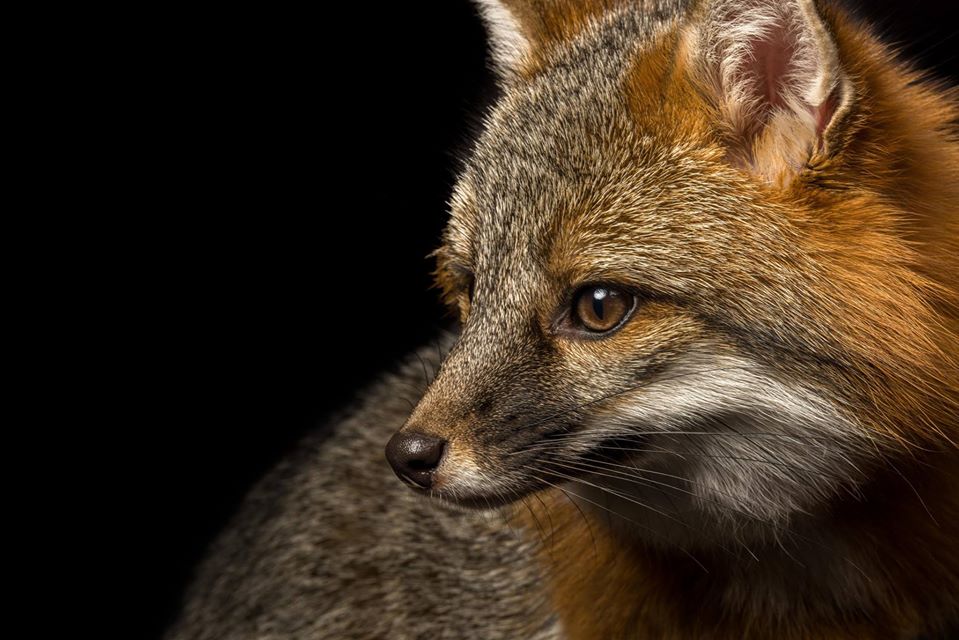|
Gray Fox Order: Carnivora Family: Canidae Genus: Urocyon Urocyon cinereoargenteus The gray fox has been in North America for
about three and a
half million years, but in the Adirondacks only about a thousand years.
It is
the only member of the canid family in North America, to also inhabit
Central
America. They average two and a half to three and a half feet in
length, with
weights ranging from 8 to 16 lbs, with males generally larger than
females. Life expectancy in the wild is about 7 years. What distinguishes the gray fox from other
foxes is its
ability to climb trees with its powerful hooked claws, not only
enabling it to
escape would be predators like coyotes and dogs, but also allowing it
to forage,
hunt and even den in tree hollows. Gray fox can climb trunks up to 60
feet
high, leaping from branch to branch, and descend cat style, rear
quarters
first. The gray fox was once the most common fox in North America, but
the red fox is better able to adapt to living around human dwellings,
and so is now the most common fox. Gray fox gave oval shaped pupils,
while other foxes have slit-like pupils. The smaller Channel Island
foxes of California, are believed to have evolved from gray foxes. Mating season varies by latitude, with
southern gray fox
mating in January while northern fox in April. Dens are used while
birthing or raising kits, and as a general home base at other times.
Dens may be in rocky crevices, caves, log hollows
and enlarged woodchuck or other rodent burrows. Gestation is about 53
days. As with other canids,
gray fox are family groups, and Dad will help feed
the pups, who stay in or around the den, learning
to hunt and forage, developing adult teeth by 4 months, beginning to
hunt on their own, and finally dispersing from the
den to begin their adult life after about six months, with the males
eventually dispersing up to about 50
miles and females staying within a few miles of the natal den. Gray fox are nocturnal and crepuscular
omnivores, who consume
voles, mice, rabbits and birds, grasshoppers and crickets, but also
grass, corn,
fruit, nuts, apples and berries, making gray fox even more omnivorous
than red foxes.. Steve Hall |

Gray Fox, Merry, by Dr. Greg Gulbransen at the Adirondack Wildlife Refuge

Merry at the Saranac Lake Winter Carnival
Tommy Mingoia and Merry

Gray Fox by Kevin McKenzie.
Come meet our Ambassador Bears & Learn all about Bears
| Bears |
Wolf |
Eastern Coyote. Coywolf |
Red Fox |
Gray Fox | Arctic Fox |
Bobcat | Lynx | Moose |
White
Tail Deer |
Opossum | Porcupine | Fisher | Beaver | Bald Eagle |
Osprey | Adirondack Loons |
Ravens
Crows & Wolves |
| Home |
Release of
Rehabbed Animals |
Learn
About Adirondack & Ambassador Wildlife |
Critter
Cams & Favorite Videos |
History
of Cree & the Adirondack Wildlife Refuge |




